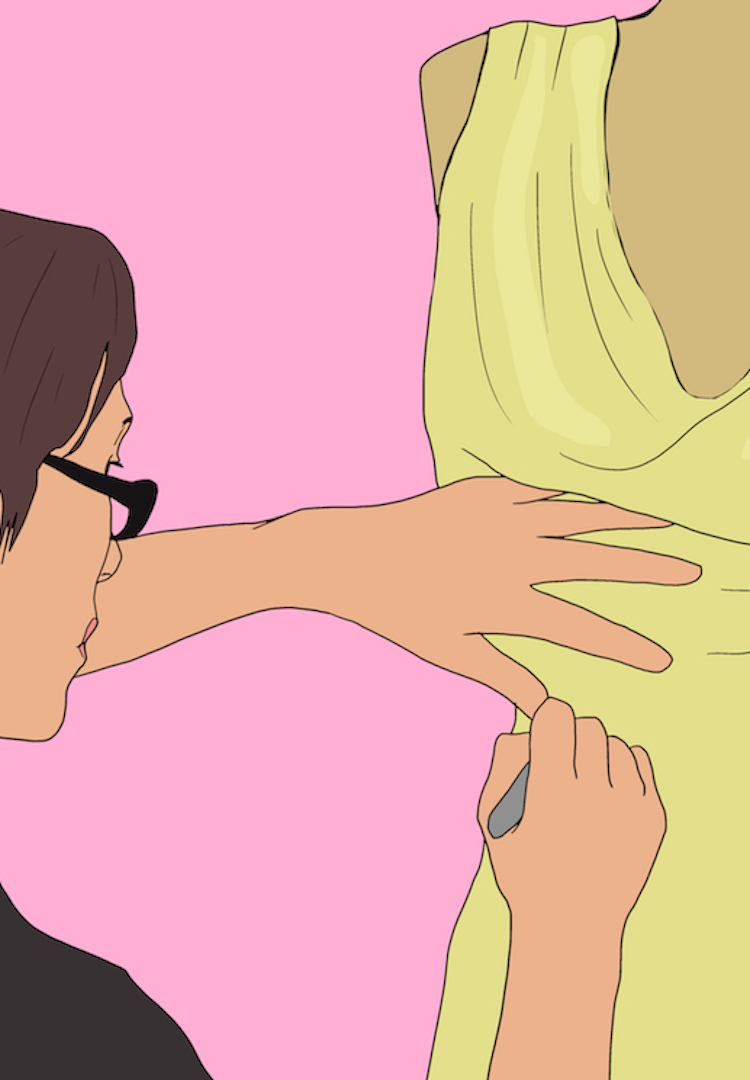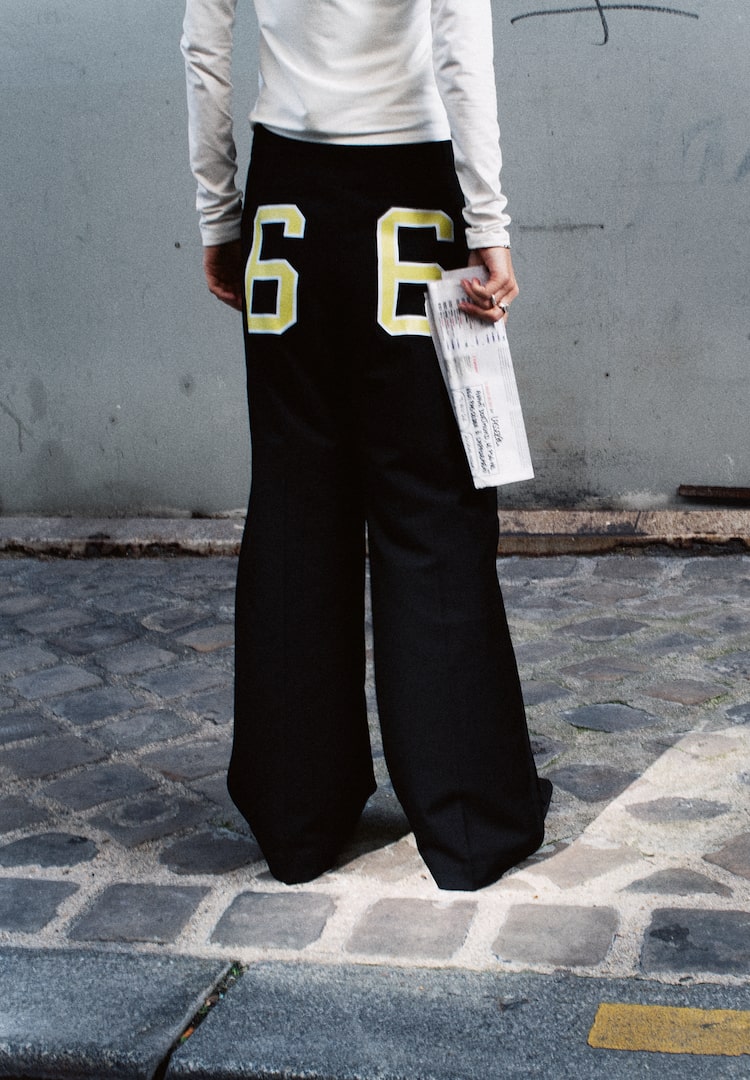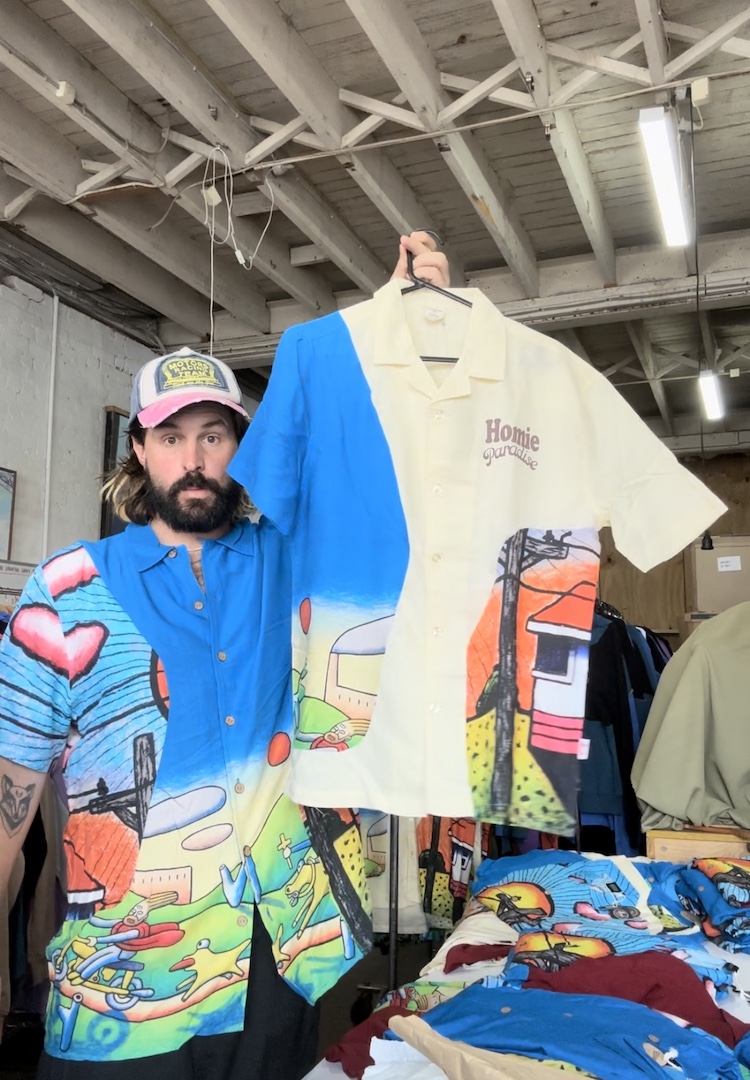Why everyone should invest in a tailor
Illustration by Twylamae
Words by Holly Bodeker-Smith
And why that tailor should become your best friend.
This year I am on a mission to buy less clothing – whether second-hand or new. But every successful mission requires a partner in crime. So I have enlisted my tailor.
I have been visiting him once a year for the last four years, always bringing dozens of garments with holes and hems to repair. He is an Italian man in his seventies who has been sewing since he was 12. His small shop has red walls, dusty carpets and a long workbench scattered with pins.
On my most recent visit, I brought him 20 pieces in an Ikea bag and hauled it onto the bench. As he pulled out the first casualty, a 1970s sky blue jumpsuit with crotch tears, the shame fell over me.
“What is this?!” he asked.
“It’s a jumpsuit.”
“What were you doing?”
“Jumping.”
“Too much jumping, no more jumping,” he scolded.
That wasn’t the worst of it. There were the velvet Max Mara pants that split down the crotch mid-slut drop, a pair of old Levi’s with holes in the pockets, and a silk blouse with armpit tears. We pulled out each piece and I forensically pointed to the holes and tears. He took notes and pinned them to each crime scene.
“I’ll see, I’ll see. I’ll do my best,” he repeated with each one.
This man is from an era when having your clothes tailored by a professional, or making and mending them yourself, was economically accessible and the norm. The World War II-era phrase of ‘Use it up, wear it out, make it do’ summarised the attitude around clothing for generations.
Clothing was also made with future alterations in mind. A pair of 1960s pants or a 1950s dress would have extra fabric sewn into the seams, so you could lengthen them or make them a size bigger.
In fact, making and mending our own clothes, or paying a tailor to do it, is not that outdated. In her book, Overdressed: The Shockingly High Cost of Cheap Fashion, Elizabeth Kline writes that in 1995, half of the clothing in America was still made at home.
But we have come aeons from that point in less than two decades. Today, globalisation’s rapid pace of production is perhaps most pertinent in the fast fashion industry. Just look at its speedy production lines, where a fast fashion retailer can have a design drawn up, sampled, manufactured and on a rack within six weeks.
This model has turned clothing into fodder for mindless consumption, and the model of making offshore has only exacerbated the disconnect. As consumers, we are flooded by convenience and choice. But we have never been so far removed from the choices that went into our clothing. What were a designer’s considerations of sleeve lengths or buttons? How did that translate when a garment worker sat down to make the clothes? These are questions that we no longer have to ask.
Today’s model also gives us a rack of clothing in a range of arbitrary, and often inconsistent, sizes. If they don’t fit, we either grin and bear it or look somewhere else. We are then plagued by the the work of choosing between thousands of garments that don’t quite feel right. This subtly convinces us that if we can’t find a perfect fit, there is something wrong with our bodies.
But this is wrong. The diversity of human – especially female – bodies cannot be encapsulated by ten sizes on a rack. Every single body is different, and altering clothes is supposed to help with that.
Finally, rapid supply chains and slashed prices have shifted the value indicator for our clothes. Things that we wear day in, day out – that are so integral to our identities – are worth less than a meal out. Why would I pay to repair or alter something if I can just throw it away and buy a new one?
Designing, making and mending clothes is valuable, complex work. It takes thought, experimentation and innovation. It is one of the most common jobs in the world. But with fashion’s current model, we are moving further and further away from the threads of collaboration that once tied the garment maker, or mender, to the wearer. We’ve reached a collective sartorial migraine.
Through my tailor, I have found that there are two antidotes to this. The first is to continuously invest in and inject new life into the clothes you already have – like altering a garment to make it more suited to your shape. The second is by finding a person to collaborate with through that process – whether it’s a friend that you swap clothes with or a tailor you develop a bond with.
I pick up that bag of clothes from my tailor and right before I do, I remember a dress that I had left with him. It’s a knitted navy number from the 1970s, with bell sleeves and bright red trim, previously pockmarked with holes. When I arrive, it’s missing from the pile. After I mention it he spends 20 minutes hurrying around the shop, coming back and forth into the studio and saying, “I know, I remember it, it’s here somewhere.” He returns to behind the counter and I say: “Don’t worry about it right now, you can call me when you find it, I trust your judgement.”
But, “Here! It’s here!” he says. He lifts the dress up from the floor behind the counter, still with paper slips pinned over every hole that he darned. Where there were holes there are small bundles of navy fabric he has darned. His work etched into the dress I’ll wear again come winter. “Thank you, thank you, now I can wear this again,” I say.
“Thank you, thank you,” he says, “I did my best.” That’s more than enough for me.










